Neith › Early Dynastic Period In Egypt » Ancient origins
Articles and Definitions › Contents
- Neith › Who Was
- Early Dynastic Period In Egypt › Antique Origins
Ancient civilizations › Historical and archaeological sites
Neith › Who Was
Definition and Origins
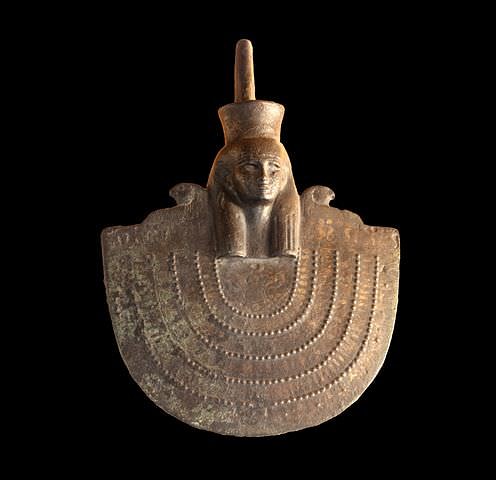
Neith (aka Net, Neit or Nit) and is one of the oldest deities of ancient Egypt who was worshipped early in the Pre-Dynastic Period (c. 6000 - 3150 BCE) and whose veneration continued through the Ptolemaic Dynasty (323 - 30 BCE), the last to rule Egypt before the coming of Rome. She was a war goddess, goddess of creation, mother goddess who invented birth, and funerary goddess who cared for and helped to dress the souls of the dead. Her cult center was at Sais in the Nile Delta and she continued as the most popular goddess of Lower Egypt even after her attributes were largely given to Isis and Hathor and those goddesses became more popular in Egypt. Neith continued to be honored as the patron goddess of Sais throughout Egypt's history as she was considered a great protector of the people of the land and the most effective mediator between humanity and the gods.
Neith is said to have been present at the creation of the world and, in some stories, even the creator herself who gave birth to Atum (Ra) who then completed the act of creation. She is always represented as extremely wise and just as in the story of The Contendings of Horus and Set where she settles the question of who will rule Egypt and, by extension, the world. She is one of the four goddesses, along with Isis, Nephthys, and Serket, who appear on the canopic jars in the tomb of Tutankhamunand is probably best known today for her statuary there. She stands watch over Duamutef, one of the Four Sons of Horus, who guards the canopic jars in the tombs and also appears alongside Osiris, Anubis, and Thoth as a just judge of the dead in the afterlife. Her symbols are the bow and arrows and a sword and shield as a war goddess, a weaving shuttle as a funerary goddess, and the Red Crown of Lower Egypt as goddess of creation and mother goddess. Neith is frequently depicted sitting on her throne holding either a sceptre or a bow and two arrows. She is also sometimes seen as a cow, linking her with Hathor or with the Great Cow who was mother to Ra.
BY THE TIME OF THE OLD KINGDOM NEITH WAS CONSIDERED A WISE VETERAN & THE DEPENDABLE MEDIATOR OF THE GODS & BETWEEN THE GODS & HUMANITY.
NAME & ORIGINS
Neith is also known by the names Net, Neit, Nit all of which, according to scholar Geralidne Pinch, may mean "the terrifying one" because of her immense power and wide reach (169). She was also called "mother of the gods", "grandmother of the gods", and "great goddess". Her worship began in Lower Egypt around the city of Sais and she is thought to have originally been a goddess of hunting. The earliest depictions of her show her with a bow and arrows but, according to Geraldine Pinch, this was a later interpretation of an earlier symbol: "The curious symbol that represented Neith in these early times may originally have been a click beetle. Later this symbol was reinterpreted as two arrows crossing a shield. Click beetles are usually found near water and Neith was often equated with Mehet-Weret, a primeval goddess whose name means the Great Flood" (170). There is no doubt, however, that she became a war goddess by the time of the Early Dynastic Period (c. 3150-2613 BCE) as names for her from that period include "Neith Fights", "Neith is Victorious" and, by the time of the Old Kingdom (c. 2613-2181 BCE), she was considered a wise veteran and the dependable mediator of the gods and between the gods and humanity. Scholar Richard H. Wilkinson comments on this:
Neith is one of the most ancient deities known from Egypt. There is ample evidence that she was one of the most important deities of the prehistoric and Early Dynastic periods and, impressively, her veneration persisted to the very end of the pharaonic age. Her character was complex as her mythology continued to grow over this great span of time and, although many early myths of the goddess are undoubtebly lost to us, the picture we are able to recover is still one of a powerful deity whose roles encompassed aspects of this life and the beyond (156-157).
According to one myth, Neith preceeded creation and was present when the waters of Nun began to swirl at her command to give rise to the ben-ben (the primordial mound) upon which Ra (Atum) stood to complete the task. In another version of the story, Neith created the world and then went directly to found her city of Sais, leaving the rest of the work to Atum. By the time of the end of the Ptolemaic Dynasty Neith was still recognized as a creative force of enormous power who "created the world by speaking seven magical words" (Pinch, 170). She was closely associated with the creative element of water and was "the personification of the fertile primeval waters" and was "the mother of all snakes and crocodiles" as well as being the "great mother who gave birth to Ra and who instituted giving birth when there had been no childbirth before" (Pinch, 170). In still other myths, it is Neith, not Isis, who is the mother of Horus the divine child and restorer of order.

Bronze Statue of Neith
Neith may have originally been a fertility deity corresponding to the goddess Tanit who was later worshipped in North Africa at Carthage in that Ta-Nit in Egyptian means "the land of Nit" and can also be interpreted as "from the land of Nit", as that region was known. She is also associated with Astarte of Phoenicia and, through her, to Ishtar of Mesopotamia. Herodotus claims that the people of Sais were deeply devoted to Neith as the creator and preserver of all and identified her with the Greekgoddess Athena. Plato also comments on the link between Neith and Athena in his dialogue of the Timaeus where he writes, "The citizens [of Sais] have a deity for their foundress; she is called in the Egyptian tongue Neith and is asserted by them to be the same whom the Hellenes call Athena" (21e). Her identification as the most powerful creative force in the universe is noted by Plutarch (c. 50 - 120 CE) who writes that the temple of Neith at Sais held this inscription: "I Am All That Has Been, That Is, and That Will Be. No Mortal Has Yet Been Able to Life the Veil that Covers Me". It is interesting to note that her name, among its many other connotations, links to the root word for "weave" which carries with it the meaning of "to make exist" or "create" or "to be".
NEITH THE GREAT GODDESS
Egyptian religious life - which was not in any way differentiated from daily life - was centered on the concept of ma'at (harmony and balance) and there are many deities besides the goddess Ma'at who embody and uphold this concept. Thoth, for example, healed and helped both Horus and Set in their struggle for supremacy of rule so that the contest would be balanced. Neith performed this same function as it is said that her spittle created the serprent monster Apophis who nightly tried to destroy the boat of the sun god and so return the order of the universe to chaos and, at the same time, she was the mother of the sun god and his protector. She is depicted as destroying her child Apophis and, at the same time, creating him as she is also seen as protecting her son Ra while having created his arch enemy; in all of this, balance was achieved.
In the same way, Neith invented birth and gave life to humanity but was also there at a person's death to help them adjust to the new world of the afterlife. She helped to dress the dead and open the way for them to the afterlife and the hope of immortality and paradise in the Field of Reeds. As she was associated with weaving, she became linked to the goddesses Tatet and Nephthys who helped prepare the dead souls to move forward and also with Qebhet who cared for the dead and made sure they had cool water to drink as they awaited judgment. As with many, if not all, of the Egyptian deities, Neith was a part of a person's life from their birth through their death and on into the afterlife. One was never alone in the universe because the gods were constantly watching and protecting and guiding one on one's path and that path was eternal no matter how temporal it might seem to people on earth.

Canopic Chest
WORSHIP OF THE GODDESS
Neith was worshipped throughout Egypt but most ardently at Sais and in Lower Egypt. She was a part of the Triad of Latopolis at Esna along with Khnum ("The Great Potter" who fashioned human beings) and Heka (god of magic and medicine) replacing the goddess Menhet who may have actually been only an aspect of Neith. She was also worshipped as the consort of Set, god of chaos, in another example of the importance of balance to the Egyptian religion. In The Contendings of Horus and Set, Neith tells the gods of the tribunal that Horus should be declared king after his father Osiris' death and resurrection and that Set should rule the wild lands beyond Egypt's border and be given two goddesses, Anat and Astarte, as consorts to keep him company. She was also associated with Osiris and watches over his mummified body to keep it safe from Set so that Isis and Nephthys can revive him. In all these aspects, again, she is seen as keeping balance. Although she may be Set's consort she is also friend to his adversary Osiris and sides with Osiris' son Horus against Set in the interests of justice and harmony. This seems to have been her primary role from very early on in Egypt's history as Wilkinson notes writing on her longevity:
Neith's prominence in early dynastic times - as seen in 1st-dynasty labels, funerary stelae, and in the names of her priestesses and the contemporary queens such as Neithotep and Merneith - suggest the goddess was worshipped from the beginnings of Egyptian culture. In fact, the earliest portrayal of what is thought to be a sacred shrine in Egypt is associated with Neith (158).
Her association with balance can be seen in some of her iconography where she is pictured with three heads representing three points of view and also as a woman with an erect phallus representing both male and female. In these depictions she is also seen with wings spread wide and arms open in an embrace of all who come to her.
Neith's clergy were female and her temple at Sais, according to Herodotus, was one of the most impressive in all of Egypt.Daily worship of Neith would have been in accordance with the customs concerning all the gods where her statue in the inner sanctum of the temple would have been tended by the High Priestess (who alone could enter the room) and the other chambers taken care of by lesser priestesses. People who came to the temple were allowed only in the outer courtyards where they offered their sacrifices to the goddess with requests for her aid or in thanks for assistance given.
Her annual festival was celebrated on the 13th day of the 3rd month of summer and was known as The Festival of the Lamps.On this day people arrived from all over Egypt to pay their respects to the goddess and offer her gifts. At night they would light lamps which, according to Herodotus, were "saucers full of salt and oil, the wick floating thereon, and burning all night" and even those who did not attend the festival lighted such lamps in their homes, in other temples, and in the palaces so that the whole of Egypt would be illuminated all night long ( Histories, II.62). These lamps were thought to mirror the stars in the night sky which were claimed to be either deities or paths to those deities. At Neith's festival the veil between the earthly realm and the land of the dead was thought to part and people could see and speak with their departed friends and family members. The lights on earth mirroring the stars helped to part this veil because earth and the heavens would appear the same to both the living and the dead. The festival touched upon the Osiris myth and Neith's part in his resurrection as she opened the way for the dead to communicate with the living in the same way she had helped Isis and Nephthys bring Osiris back to life.
Wilkinson notes that "the worship of Neith spanned virtually all of Egypt's history and she remained to the end `Neith the Great'" (159). Although many of her attributes were given to Isis and Hathor, as previously noted, her worship never declined.Even during eras where more popular deities received the greater attention, Neith continued to be regarded with reverence and awe and her festival was considered one of the most important in ancient Egypt.
Early Dynastic Period In Egypt › Antique Origins
Definition and Origins
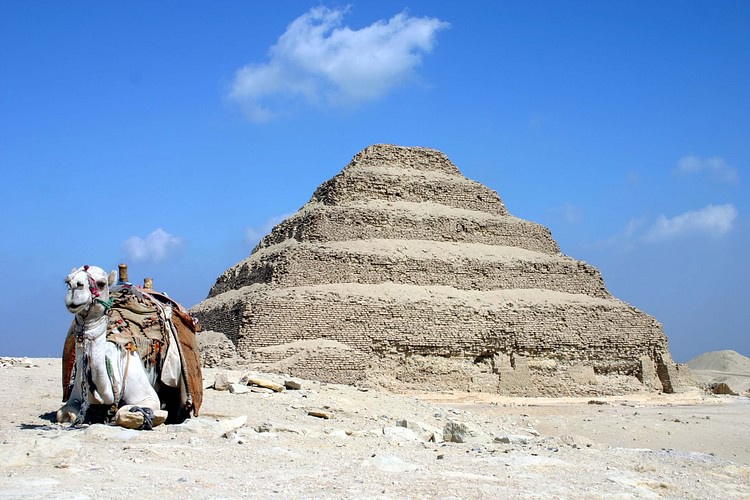
The Early Dynastic Period in Egypt (c. 3150 - c. 2613 BCE) is the beginning of the historical era of the country during which the regions of Upper Egypt (south) and Lower Egypt (north) were united as one country under a centralized government.During this period the divine rule of the kings began and a recognizable Egyptian culture, including the development of writing, arts, and sciences developed. The title ` pharaoh ' was not used during this period; rulers were referred to as `kings' and addressed as `your majesty'.
This era followed the Predynastic Period in ancient Egypt (c. 6000 - c. 3150 BCE) and was followed by the period known as the Old Kingdom (c. 2613 - 2181 BCE). While these dates are not arbitrary they should not be understood as any kind of demarcation ending one era and beginning another. They are used to help clarify the long history of Egypt by dividing its story into sections of cohesive development. The line between some periods in ancient Egyptian history does seem quite clear while, with others (such as that between the Predynastic and Early Dynastic periods) it is blurred. Dates should be understood to be approximations the further back in time one travels in Egyptian history.
EGYPT'S UNIFICATION & FIRST KING
According to the chronology of Manetho (3rd century BCE), the first king of Egypt was Menes, a king of Upper Egypt possibly from the city of Thinis (or Hierkanopolis), who overcame the other city states around him and then went on to conquer Lower Egypt. This king's name is known primarily through written records such as Manetho's chronology and the Turin King List, however, it is not corroborated by any extensive archeological evidence and scholars now believe the first king may have been a man named Narmer who peacefully united Upper and Lower Egypt at some point c. 3150 BCE. This claim is contested owing to the Narmer Palette (an ancient inscribed slab) which depicts a king, positively identified as Narmer, as a military figure conquering a region which is clearly Lower Egypt. Historian Marc Van de Mieroop comments on this:
That Egypt was created through military means is a basic concept expressed in the art of the period. A sizeable set of stone objects, including cermonial mace-heads and palettes, contain scenes of war and fighting between men, between animals, and between men and animals.Whereas in the past Egyptologists read the scenes of war literally as records of actual events, today they prefer to see them as stereotypical statements of kingship and the king's legitimacy (33).
This new method of interpreting ancient inscriptions, however valuable some may consider it, does not mean such interpretations are accurate. The argument against such interpretations asks why, if these inscriptions are to be taken symbolically, others of later periods - such as those of Rameses the Great at the Battle of Kadesh - continue to be read literally as historical record. Van de Mieroop comments further, stating, "This new approach makes it impossible to date the unification of Egypt or attribute it to a specific individual on the basis of these representations" (33-34) but notes that, whatever the case regarding the first ruler, "the art of the period shows that the Egyptians linked unification with conflict" (34). Scholar Douglas J. Brewer, on the other hand, does not see any problem in regarding the inscriptions symbolically. The name `Menes" means "He who endures" and could possibly be a title, not a personal name, in which case there is no difficulty in identifying the first king as Narmer `who endured'.
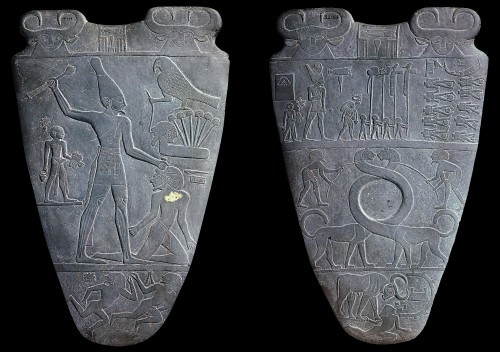
Narmer Palette
The name `Menes' has also been found on an ivory inscription from Naqada associated with Hor-Aha, which could mean the title was passed down or that Hor-Aha was the first king. Brewer notes that these ancient inscriptions, such as the Narmer Palette, perpetuate "a culturally accepted scenario and, therefore, should perhaps be regarded as a monument commemorating an achieved state of unity rather than depicting the process of unification itself" (141). To scholars such as Brewer, the means by which unification came about are not as important as the fact of unification itself. The details of the event, like those of any nation's origins, may have been largely embellished upon by later writers. Brewer writes:
Menes probably never existed, at least as the individual responsible for all the attributed feats. Rather he is most likely a compilation of real-life individuals whose deeds were recorded through oral tradition and identified as the work of a single person, thereby creating a central hero figure for Egypt's unification. Like the personalities of the Bible, Menes was part fiction, part truth, and the years have masked the borderline, creating a legend of unification (142).
Unification, Brewer (and others) claim was "most likely a slow process stimulated by economic growth" (142). Upper Egypt seems to have been more prosperous and their wealth enabled them to systematically absorb the lands of lower Egypt over time as they found they needed more resources for their population and for trade. Whether the king who united the country was Narmer or someone of another name, this king lay the foundation for the rise of one of the greatest civilizations of the ancient world.
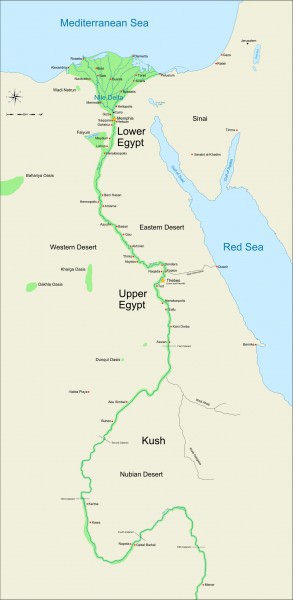
Ancient Egypt
EGYPT'S FIRST DYNASTY
The First Dynasty of Egypt (c. 3150 - c. 2890 BCE) was founded by Menes/Narmer after the unification of the country. The great Egyptologist Flinders Petrie (1853-1942 CE) accepted Narmer as the first king of the first dynasty claiming that the two names designated one man. Flinders Petrie, and others following him, claim that whether Narmer united Egypt by force is considered irrelevant in that it is almost certain he had to maintain the kingdom through military means and this would account for his depiction in inscriptions such as the Narmer Palette.
PHARAOH NARMER INITIATED LARGE BUILDING PROJECTS AND UNDER HIS RULE URBANIZATION INCREASED.
Narmer (probably from Thinis) married the princess Neithhotep of Naqada in an alliance to strengthen ties between the two cities. He led military expeditions through lower Egypt to put down rebellions and expanded his territory into Canaan and Nubia. He initiated large building projects and under his rule urbanization increased. The cities of Egypt never reached the magnitude of those in Mesopotamia perhaps owing to the Egyptians' recognition of the threats such development posed.Mesopotamian cities were largely abandoned due to overuse of the land and pollution of the water supply while Egyptian cities, such as Xois (to choose a random example), existed for millenia. Although later developments in urban development ensured the cities' continuation, the early efforts of kings like Narmer would have provided the model.
It is possible that Neithhotep ruled on her own following Narmer's death but this claim is far from universally accepted. Her tomb, discovered in the 19th century CE, was on par with a king's and suggested a status greater than simply a monarch's wife. Further evidence for her rule is her name inscribed in serakhs from the time which was a practice reserved only for a ruler, not a spouse. Still, her reign is far from clearly attested.
Narmer is instead thought to have been succeeded by his son Hor-Aha c. 3100 BCE (though some claim the two are the same person) who continued his father's military expansion and increased trade. He was especially interested in religion and the concept of the afterlife and the mastaba tomb (a house for the deceased) was developed under his reign. Hor-Aha was succeeded by his son Djer in c. 3050 BCE and continued the same policies as his predecessors. His son, Djet (c. 3000 BCE) married the princess Merneith and, upon his death, she is thought to have assumed control of the country. It is unclear whether she reigned as regent for her young son Den or ruled as queen but, either way, her reign marks the first time a woman is attested as ruling in ancient Egypt.
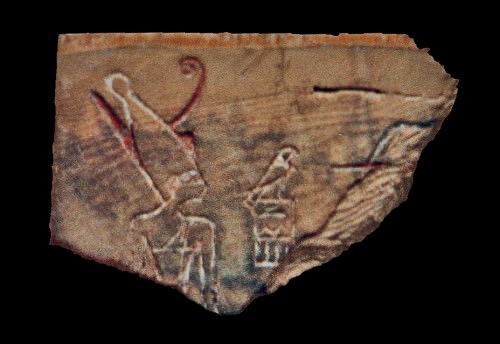
Den
Her son, Den (c. 2990 BCE) is considered the greatest king of the First Dynasty and ruled for fifty years. His reputation as an effective king comes from his improvements to the country's economy, military conquests, and the stability of his reign as evidenced by lavish building projects and intricate works of art. Den is the first ruler to be depicted wearing the crowns of Upper and Lower Egypt, clearly indicating a united nation under his rule. Den was followed by two other kings, Anedjib and then Semerkhet, who experienced difficult reigns marked by insurrection. The dynasty ended with the reign of Qa'a whose successors fought for the throne and were subdued by Hotepsekhmenwy who founded the Second Dynasty.
EGYPT'S SECOND DYNASTY
The Second Dynasty (c. 2890 - c. 2670 BCE) was marred by internal conflict and a lack of, or confusion of, records. None of the rulers of the Second Dynasty have verifiable dates and many of the names of kings seem to be repetitions of earlier rulers.Hotepsekhmenwy, whose name means "two powerful ones are at peace" is a perfect example of this problem. It would make sense, because of his name, that he came to power after subduing the princes who fought for the throne after Qa'a but his name is inscribed on the entranceway to Qa'a's tomb meaning that, 1. he was the ruler responsible for burying Qa'a and, 2. he already had that name before the war over succession broke out. The argument that the war started immediately after Qa'a's death and was crushed quickly by Hotepsekhmenwy is not supported by the archaeological evidence or the Egyptian culture which would not have allowed the king's body to lie in wait to be buried for so long. It is possible that Hotepsekhmenwy had already tried to resolve the differences between the princes prior to Qa'a's death but this is just speculation.
RANEB (NEBRA) WAS THE FIRST KING TO LINK HIS NAME TO THAT OF THE GODS AND SO ESTABLISH THE RELATIONSHIP BETWEEN THE KING AND THE DIVINE.
Even so, Hotepsekhmenwy is credited with bringing peace to Egypt upon his ascent to the throne; even though that peace was short-lived. His reign was characterized by unrest and rebellion. He was followed by Raneb (also known as Nebra) who was the first to link his name to that of the gods and so establish the relationship between the king and the divine. His successor, Nynetjer and the following, Senedji, continued to deal with the civil problems of the nation and little else is known of them.Senedji was succeeded by Peribsen (also known as Seth-Peribsen) who is a figure of some controversy among scholars.
Peribsen is the first king to separate himself from the Horus cult and embrace that of Set. This is significant because, in Egyptian religion, Horus the Younger was the son of the great god Osiris who defeated Set in order to bring harmony to the world. As harmonious balance was an important value to the ancient Egyptians, it seems strange that a king would decide to align himself with the forces associated with chaos. There is no satisfactory answer as to why Peribsen chose to do this. Early scholars believed that he was the first monotheist who declared Set the only god but this has been disproven by evidence of the worship of many gods during his reign. As his name is only recorded in Upper Egypt, there is also a theory that he chose to align with Set for political reasons; to distance himself from the Horus cult of Lower Egypt. Whatever the reason, he is considered a good king in that trade, the economy, religious practice, and the arts all flourished under his reign. The first complete sentence written in ancient Egypt was found in his tomb and reads: "The golden one, he of Ombos, hath unified and handed over the two realms to his son, the king of Lower and Upper Egypt, Peribsen" meaning that Set (he of Ombos) had blessed Peribsen's rule. The sentence also indicates that Egypt was unified under Peribsen's reign and the claim that he aligned himself with Set to distance himself from the Horus cult of Lower Egypt is untenable.
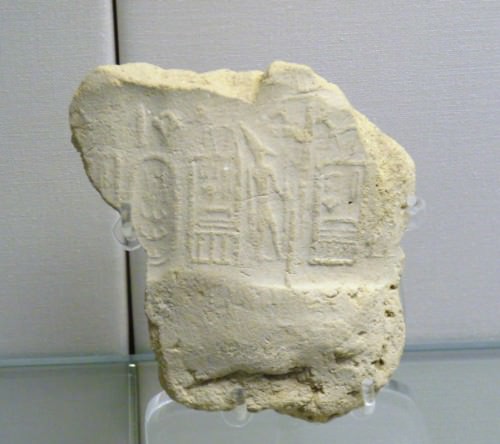
Seal of Peribsen
Peribsen was succeeded by Khasekhemwy, possibly his son, who continued the building projects of his predecessors and is thought to have brought the two regions of Egypt again under central rule or, at least, strengthened unification. His is best known for his monuments at Hierakonopolis and Abydos and as the father of the pharaoh Djoser.
EGYPT'S THIRD DYNASTY
Djoser's Step Pyramid at Saqqara is the first known pyramid built in Egypt. The Third Dynasty has been traditionally linked to the Fourth and the period known as the Old Kingdom because of its association with the first pyramids. Recent scholarship, however, has placed it at the end of the Early Dynastic Period because of the greater similarity in culture and technology with the earlier period than the latter.
The mastaba tomb was developed during the First Dynasty and the Step Pyramid at Saqqara is an elaborate, `stacked' mastaba, not a true pyramid such as those found at Giza. Djoser's pyramid, even so, is a masterpiece of technology.Designed by the vizier Imhotep, the pyramid was created as the eternal home for the king and later pyramids would follow its basic design.
DJOSER'S REIGN BROUGHT THE STABILITY NECESSARY FOR LARGE BUILDING PROJECTS AND THE DEVELOPMENT OF THE ARTS.
Djoser (c. 2670 BCE) built so many monuments that scholars have long held his reign to have lasted at least 30 years but, most likely, he ruled closer to 20. He initiated military campaigns to Sinai and maintained the cohesion of Egypt, resulting in the stability necessary for his building projects and the development of the arts. He was succeeded by Sekhemket who was followed by Khaba, both of whom also built pyramids, the Buried Pyramid and the Layer Pyramid, as well as other monuments.The Third Dynasty ends with the reign of Huni (c. 2630 - 2613 BCE) about whom little is known. Upon his death, he was succeeded by Snefru who founded the Fourth Dynasty which begins the period known as the Old Kingdom.
LEGACY
The Early Dynastic Period in Egypt was a time of revolutionary advancements in culture. The calendar was created, writing developed, knowledge of the sciences, arts, and agriculture all advanced, as did the kind of technology required to build monuments such as the Step Pyramid. Just as importantly, religious sensibility developed to a high degree; a value which would inform the rest of the history of Egypt. The concept of ma'at, harmony, became widely valued during this time and the understanding began to grow that life on earth was only one part of an eternal journey. This understanding, which was only possible for a people living under a stable government who did not have to worry about their personal safety or livelihood, led, according to the historian Bunson, "to an emerging sense of the `other' in the world, to the concept of eternity and spiritual values. Egyptians were taught that they were truly one with the divine and with the cosmos" (78). The Egyptian belief in eternity, and in the eternal life of every living thing, would become the defining characteristic of their culture and inform every monument, temple, and building they would create; especially the great pyramids which have come to be synonymous with Egypt.
LICENSE:
Article based on information obtained from these sources:with permission from the Website Ancient History Encyclopedia
Content is available under License Creative Commons: Attribution-NonCommercial-ShareAlike 3.0 Unported. CC-BY-NC-SA License